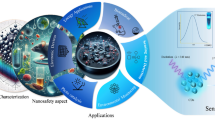Abstract
Changes in red blood cellsize, deformability, andosmotic fragility are indicators of altered condition and/or altered regulatory processes at the whole cell and membrane levels. An agent, such as HgCl2, that brings about specific changes of this kind can therefore serve as a selective probe of such cell condition and regulatory state. Conversely, for a health-threatening agent “active” in this way, the cell-membrane responses serve to clarify the more fundamental bases of its toxicity, as well as to permit identification and characterization of its early and low-level actions on living systems. Taking advantage of recent advances in the technique of “resistive pulse spectroscopy,” we present a coordinated study of these three interrelated biophysical properties for the interactions of HgCl2 with human red cells. We thereby are able to extend previous studies of this kind into domains of shorter time (instantaneous exposures), lower level exposures (down to 10−9 M, well below the level of acute human toxicity), as well as to additional kinds of responses (e.g., “dynamic osmotic hemolysis”). For conditions ranging from 10−4 to 10−9 M in HgCl2, for instantaneous to 90-min-incubated exposures, for medium osmolarities from 120 to 300, the matrix of observed cell responses includes relative swelling as well as shrinkage, changes in deformability, and both enhancement of and protection against osmotic hemolysis. Some unexpected short-term effects of time and temperature of storage of blood cell stock samples, with respect to increasing and decreasing osmotic fragility, are also reported. These apparently disparate results are interpreted in terms of mercury interactions with cell and membrane SH groups, and a reasonable rationale is presented for most of the responses in terms of disruption of passive and active Na+−K+, gradient controls, plus interactions with cellular proteins.
Similar content being viewed by others
References
Mohandas, N., Clark, M. R., Jacobs, M. S., Groner, W., and Shohet, S. B. (1980),Blood Cells 6, 329–334.
Mel, H. C. (1980),Blood Cells 6, 339–344.
Rothstein, A. (1972), “Mercaptans, the Biological Target for Mercurials” inMercury, Mercurials and Mercaptans (Miller, M. W., and Clarkson, T. W., eds.), Charles C Thomas, Springfield, Ill., pp. 68–95.
Lessler, M. A., and Walters, M. I. (1973),Proc. Soc. Exptl. Biol. Med. 142, 548–553.
Tanaka, R., and Nakai, K. (1977),Jap. J. Pharmacol. 27, 413–419.
Mel, H. C., and Yee, J. P. (1975),Blood Cells 1, 391–399.
Yee, J. P., and Mel, H. C. (1978),Biorheology 15, 321–339.
Dulbecco, R., and Vogt, M. (1954),J. Exptl. Med. 99, 167–199.
Coulter, W. H. (1956),Proc. Natl. Electron. Conf. 12, 1034.
Yee, J. P. (1979), “Development and Application of ‘Resistive Pulse Spectroscopy’, Studies on the Size, Form and Deformability of Red Blood Cells,” PhD Thesis, University of California, Berkeley, California 94720. (Also US Department of Energy, Lawrence Berkeley Laboratory, LBL-8840, January 1979.)
Weed, R., Eber, J., and Rothstein, A. (1962),J. Gen. Physiol. 45, 395–409.
Passow, H. (1970), “The Red Blood Cell: Penetration, Distribution, and Toxic Actions of Heavy Metals,” inEffects of Metals on Cells, Subcellular Elements, and Macromolecules, Charles C Thomas, Springfield, Ill., pp. 291–363.
Sutherland, R. M., Rothstein, A., and Weed, R. I. (1967),J. Cell Physiol. 69, 185–198.
Rega, A. F., Rothstein, A., and Weed, R. I. (1967),J. Cell Physiol. 70, 45–52.
Berg, G. G., and Miles, E. F. (1979),Chem.-Biol Interactions 27, 199–219.
Heusinkveld, R. S., Goldstein, D. A., Weed, R. I., and LaCelle, P. L. (1977),Blood Cells 3, 175–182.
Hilmy, M. I., Rahim, S. A., and Abbas, A. H. (1976),Toxicol. 6, 155–159.
Author information
Authors and Affiliations
Rights and permissions
About this article
Cite this article
Mel, H.C., Reed, T.A. Biophysical responses of red cell-membrane systems to very low concentrations of inorganic mercury. Cell Biochem Biophys 3, 233–250 (1981). https://doi.org/10.1007/BF02782626
Received:
Accepted:
Issue Date:
DOI: https://doi.org/10.1007/BF02782626




